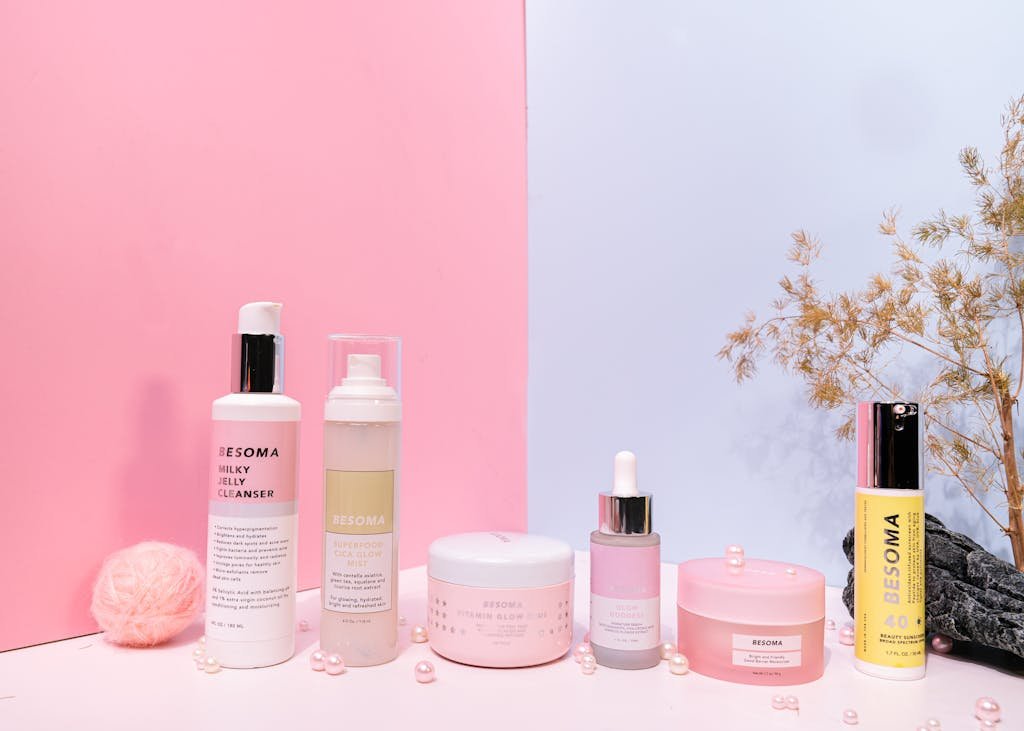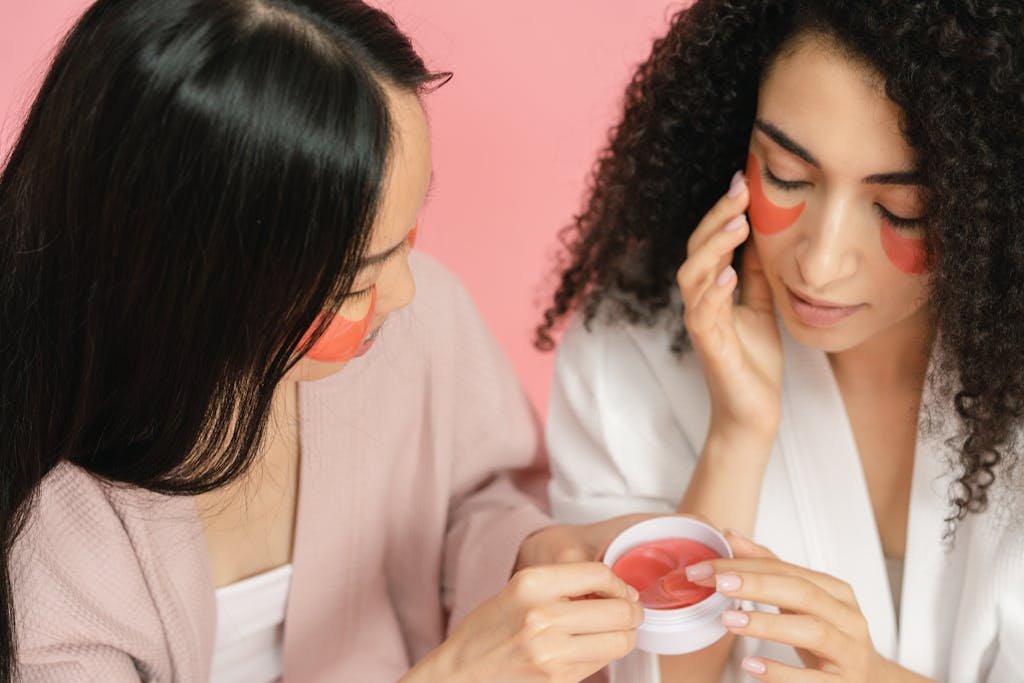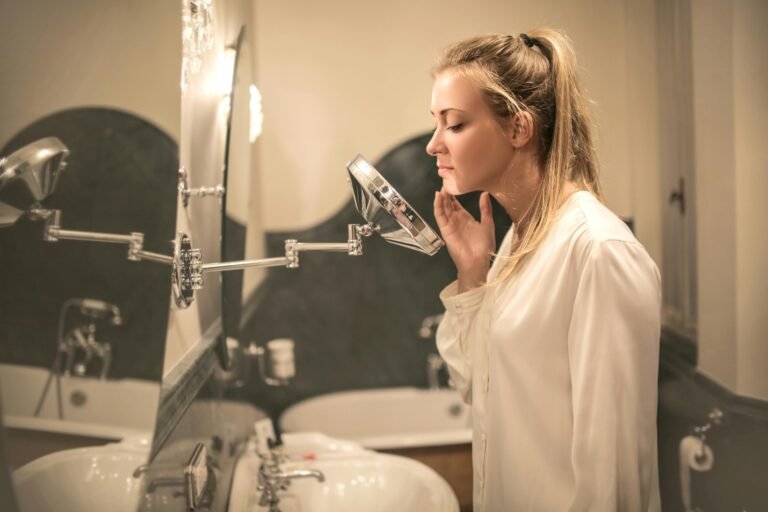The Truth Behind Skin Purging: Is it Myth or Reality?!
This post may contain affiliate links. That means that if you click on a link and purchase something I recommend, I will receive a small commission at no extra cost to you. As an Amazon Associate, I earn from qualifying purchases. This helps keep my website up and running and is very appreciated. Thank you for your support! Disclaimer
In today’s article, I want to talk about something I briefly mentioned before, which sparked a lot of discussion – the retinol purge myth. Some of you have mentioned my stance on this topic, so I want to address it head-on. I believe it’s time to debunk this long-standing myth once and for all. So let’s get started
If you don’t have time to read this post right now, why not save it for later?

The Truth Behind Skin Purging: Is it Myth or Reality?!
So, you’re really excited! You’ve been all over – Sephora, Ulta, CVS, Walgreens, Walmart – basically anywhere, searching for the fountain of youth: a retinoid. You’ve heard me talk about it, and the beauty industry can’t stop raving about it either. They say retinols are essential for getting that smooth, baby-like skin.
So, you take the plunge and buy it. But after a week of using it religiously every night, or even morning and night, your face is a mess. It’s covered in zits, bumps, and redness, and it’s peeling like crazy.
You’re thinking, “Wait a minute… I didn’t sign up for this! I was expecting baby-smooth skin, not a face that looks like a teenager’s!” You’ve heard that this might happen – it’s called the retinol purge. You’re supposed to push through it to get the beautiful skin you want.
But here’s the real question: is this really a purge, or is your skin just having a terrible reaction to the product? And what works for someone else might not work for you.
Understanding Skin Purging ?

I want to touch on what exactly is a purge because there’s a lot of talk about “purging” in skincare circles, with many claiming it’s the body’s way of pushing out toxins. But, hold up. Skincare isn’t a ritualistic exorcism, and retinols aren’t the priests banishing toxins from your body. Our kidneys and liver handle toxin removal internally, not through our skin. So, let’s clear the air: there’s no mystical skin detox happening here that have been perpetuated among publications, among influencers, among bloggers, among brand owners, among brands.
Our skin isn’t a toxin vent; it’s more like a barrier. The ugly truth is ? No matter how beautiful you are or what a little flower you are the toxins in your body exit through urine and, yes, number two. That is how our bodies self-regulate to get rid of toxins, not through the holy grail ingredient called a retinoid.
Related : Unveiling The Secrets Of Retinoids: Your Path To Glowing Skin
Now, what’s exactly a skin purge, really? It’s just a phase. Meaning when you start using something like retinoids or even a hydroxy acid, such as a chemical exfoliant, our skin has to adjust to the product. Sometimes, things might look worse before they improve. This adjustment period on average, lasts around three-ish weeks—not months, not years.
the Causes of Skin Purging?

What causes skin purging is mainly the concentration of either the retinoid or the hydroxy acid, along with the pH of the formulation and its production method. So, why does our skin sometimes worsen during this process? Well, think of pimples, blackheads, whiteheads, and inflammatory lesions like icebergs. What’s visible on the surface is just a small part of the story; the real action is going on beneath the skin’s surface. What initially looks like a clogged pore has actually been developing over time underneath the skin.
Normally, for someone not using a retinoid or a hydroxy acid, it takes about four to eight weeks for these “micro-comedones” to reach the surface of the skin. This timeline is because our skin has an orderly structure: the epidermis on top, the dermis beneath it, and the subcutis underneath that. Within the epidermis, different layers of skin cells take about 28 days to move from the bottom to the top and shed off.
Related : How To Treat Closed Comedones- 4 Expert Tips For A Glowing Skin
Now, when you introduce a product like a retinoid or a hydroxy acid, you’re accelerating this cell turnover process, pushing skin cells from the deepest layer of the epidermis to the surface faster, and shedding skin cells more rapidly. However, it’s important to note that you’re not actually thinning out your skin. Retinoids and hydroxy acids, like glycolic acid, have been shown to stimulate collagen production in the dermis and deeper layers of the skin.
So, technically, what you’re experiencing is skin purging.
the difference between Skin Purging vs. product Reactions

Now, let’s delve into the medical aspect a bit further. Many people who visit my fiancé’s practice deal with sensitive skin reactions. It’s not just about not being able to handle certain products; it’s about finding the right balance between what works and what might cause irritation. Some folks find a balance that works for them, while others can’t handle the product at all because it doesn’t agree with their skin.
How do you tell the difference between skin purging and a reaction? Turns out, reactions are pretty common. When your skin gets irritated, it becomes red, inflamed, and doesn’t improve over time. So, if you’ve been using a retinol for months and your skin is still red, inflamed, and flaky, it’s likely a reaction. Reactions also tend to show up in unexpected places on your face, unlike purges. For example, if you usually get acne in your T-zone but suddenly break out all over after starting a retinoid, it’s probably a reaction.
During a purge, you might see more comedones (like blackheads and whiteheads) popping up in your usual acne-prone areas in the first few weeks. But with a reaction, breakouts can happen anywhere on your face and are usually more inflamed. This difference is important. Time also matters: a purge typically lasts around three weeks, but a reaction can stick around for over six weeks, depending on how long you keep using the product and exposing your skin to irritants.
Related : How To Treat Blackheads, Whiteheads, And Milia: Effective Treatments And Prevention
how do you know if you are experiencing a skin purging or a reaction?

First off, look at the active ingredients of your products. Stuff like vitamin C usually won’t trigger a purge, but it can cause irritation, and therefore can cause a reaction or a breakout . So, the things you want to keep an eye on are the ingredients that speed up skin cell turnover, like retinoids, AHAs, BHAs, salicylic acid, lactic acid, and glycolic acid.
Related : Unveiling The Power Of Vitamin C: Your Ultimate Guide To Glowing Skin
Secondly, the way a product is made matters too. Skincare’s all about trial and error. What works for me may not necessarily work for you, and that is okay. And you have to get to know your skin, learn your skin, and see what your skin responds to, see where your skin can actually tolerate, because what’s formulated and works well for one person can be a disaster for someone else. It doesn’t mean that the product is shit; it just means it’s shit for you. And so you gotta differentiate that.
Thirdly, a breakout that occurs after introducing a new product is not necessarily a sign of a purge. It could just be a product that is triggering a breakout and an irritating, inflammatory reaction.
And so in conclusion, not every breakout is a purge. I think the word “purge” has been way overused, way abused, and needs to be redefined. And I think we have to really understand that not all retinols or retinoids are actually going to cause a purge.
how to minimize skin purging?

If you’re feeling anxious about starting with a strong treatment, take it slow. Begin with an over-the-counter retinol instead of jumping straight to a prescription strength. Start with the lightest concentration available.
Next, ease it into your routine. Don’t use it every night from the get-go like you are some sort of Tarzan who’s able to tolerate the maximum effect right away. Begin by applying it just twice a week at night. Stick with this routine for a few weeks before gradually increasing to more frequent use. Then add a night, and do that for several weeks until you know you’ve got it. Then, add a night and so forth and so on .
If you’re still worried, just minimize the number of actives that you’re using and focus on using only the retinol for a couple of months. Don’t fret; Your face is not going to melt off. You will not disintegrate; You will not be looking like an old crypt keeper by the end of the two months. Your skin won’t suffer drastic consequences. Instead it will thank you in the long run, So slow and steady progress is key.
If once you’ve done all of this and you still find the retinol too harsh, try buffering it with a moisturizer. Apply the moisturizer first, then the retinol on top. This will lessen the strength of the retinol and make it gentler on your skin so it’s not as aggressive on your skin and your skin can actually tolerate .
And I repeat consistency, consistency, consistency is more important than intensity. Just like with exercising, You don’t go and do 500 sit-ups expecting a six-pack and then die the next day. You do like two sit-ups every single day, doing a little every day yields better results than overdoing it and risking harm. So, that is how you introduce retinoids into your skincare routine.
The Bottom Line
So, to sum it up, there’s a misconception that your acne has to get worse before retinol starts working. That’s not true at all. There’s no proof that your acne needs to worsen before you see improvements from using retinoids.
I hope this article has clarified the difference between a purge and normal skin reactions. Sadly, many beauty brands suggest that experiencing a purge is necessary before you see results from their products.
I say no to that idea; I believe in using gentler and better skincare products for your skin. It doesn’t mean a product is bad; it just might not be the right fit for your skin, so it’s all about experimenting to find what works best for you.
I hope this helped you learn something new today. Feel free to leave any questions or feedback in the comments. I truly value my readers’ input.







